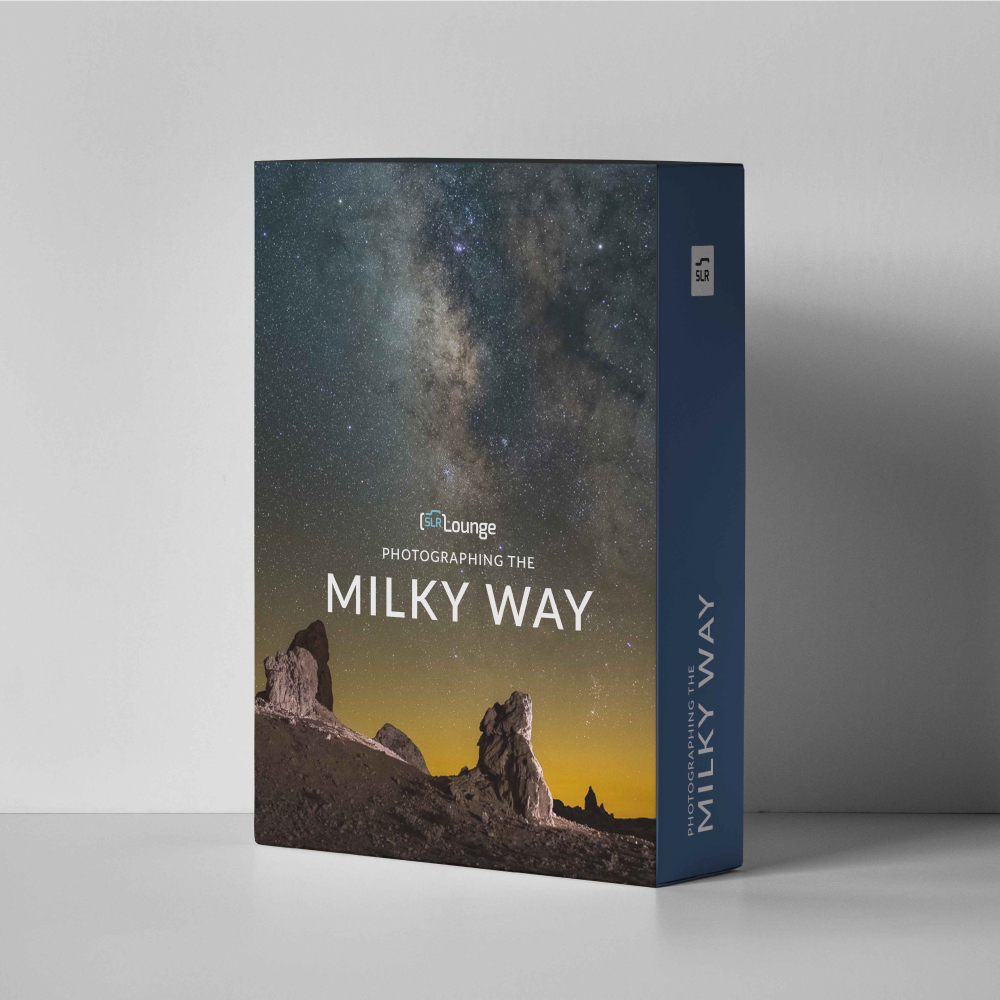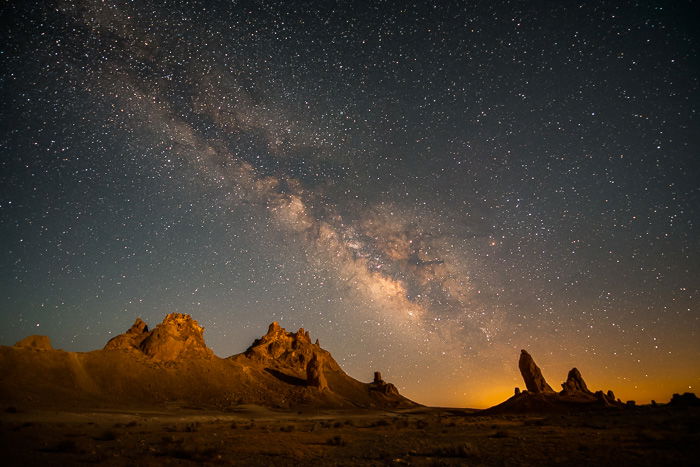Even with all the modern advances in camera and lens technology, photographing the Milky Way is still a challenge. So much so that SLR Lounge has a whole course devoted to it. It contains two hours of lessons on the intricacies of capturing this magical celestial phenomenon.
So, is Photographing the Milky Way worth two hours of your time (and your money)? That’s what his review should help you decide. We look at what the course does well and what could be improved. Then we look at alternatives and whether we recommend it to our readers. Read on to find out!

The course is a collection of video lessons, PDF resources, exercise files, and bonus presets. It promises to get amateur nightscape shooters to a master level in Milky Way photography.
The videos are roughly 2 hours long in total.
It consists of 8 chapters:
This course is made for amateurs with solid fundamentals. There are no introductory chapters on any basic skill in this course.
This means that you should already have a basic understanding of exposure and composition. You should also be familiar with the settings of your own camera.
If you don’t yet have such knowledge, SLR Lounge offers a beginner course, named Photography 101. In my opinion, it’s one of the best, check it out or read my full review here.
The provider of this course, SLR Lounge, is one of the most reputable sites for photography education.
SLR Lounge is based in California. They are a team of experienced professionals. This course (unlike most of their courses) is presented by Shivani Reddy and Matt Saville.
There are two options for purchasing ‘Photographing the Milky Way’ from SLR Lounge. You can pay a one-time, $79 price for the course on its own. In this case, you get lifetime access, allowing you to download the material completely.
Or, you can get the SLR Lounge Premium subscription, which costs $348 every year. With the subscription, you can stream all the available courses. You can also download presets, image packs, and more.
At the time of writing (Spring 2020), Premium is available at a 50% discounted price.
The creators of ‘Photographing the Milky Way’ chose an A-Z approach. It covers everything you need to know to go out and shoot the beautiful night sky, despite it’s relatively short, 2-hour span.
It includes all the key elements for crafting amazing, breathtaking nightscapes.
This course is primarily made for amateurs, and it’s built in a way to support that. There’s not a lot of technical jargon and the line of thought is always clear. There are few oversimplifications or technical mistakes.
It is structured in a way that even if you don’t know anything about astrophotography, you’ll still be able to follow along and learn.
As always with SLR Lounge, the imagery is outstanding. Many educators make the mistake of including mediocre images in their courses. This usually ruins the overall feel. Now, this is not the case with ‘Photographing the Milky Way’.
The images here are stunning and up to today’s standards.
The course is not brand new, so the gear used isn’t either. But this is also a plus because many viewers won’t have the best and newest equipment. It proves that great images can also be created with older, decently affordable gear.
This is something I don’t find many photographers doing, but it’s an awesome way of adding some interest and fun into your images. After a while, Milky Way photography can get boring. Why not spice it up a bit?
I love this photo, for example.
The most annoying thing when watching this course was that episodes were very short (usually a few minutes). Together with the issues of the online playback software (below), it’s been a pain to manually switch episodes every few minutes.
Many chapters could have been merged together into15-20-minutes-long ones. This would have helped the overall flow of the course.
Compared to other courses from SLR Lounge, this one is significantly shorter and, consequently, less detailed. Additional details on gear, composition, exposure stacking, light painting, and exposure calculations would have been welcome.
Because of this, I would argue that this 2-hour-long course doesn’t take you to a ‘Master’ level, as advertised. It gets you to a very solid, advanced amateur level instead.
The player doesn’t allow you to set a fixed resolution in full-screen mode. Playback was stuck on ‘Auto’ for me. Even though my connection is high-speed, it fluctuated constantly.
Automatic continuous playback doesn’t work in full-screen mode either. I had to exit full-screen, click on the next chapter, and go back into full-screen again every time.
This is an issue impacting every single one of SLR Lounge’s courses.
It’s very hard to successfully film an astrophotography tutorial on location while getting everything right in both video production and photography.
Probably as a result of this, ‘Photographing the Milky Way’ features surprisingly few on-location videos.
Shivani and Matt present most of the course in a well-lit studio, and some on-location clips have been added. But, not a lot, I would say about 15-20% of the entire course.
‘Photographing the Milky Way’ has some alternatives, most notably our own, ‘Milky Way Mastery’. Check it out via the link.
‘Photographing the Milky Way’ is a great course. Although it hasn’t met my initial expectations entirely, it’s not because it is a disappointing course. It’s rather about my expectations being very high. Overall, it’s still a strong, well-rounded tutorial on the matter.
The truth is, though, that SLR Lounge’s best, market-leading courses are not on landscape-type genres of photography. It’s the lighting, business, and wedding courses that put them above most others in the field.
So, if you’re interested in anything else beyond Milky Way photography, I recommend checking out their Premium subscription above all. It includes this course, but it also includes uncountable hours of education in the areas listed above. Still, the course is a good deal on its own, too.
To standardise and compare our product reviews, we’ve decided to use a scored-based ranking system. To learn more about interpreting these numbers and how other courses measure, please visit our review roundup page here.
| Measurement |
Measurement
Score
|
| Coverage |
Coverage
|
| Accuracy |
Accuracy
|
| Ease of Learning |
Ease of Learning
|
| Production Value |
Production Value
|
| Uniqueness |
Uniqueness
|
| Community and Learning Support |
Community and Learning Support
|
| Value for Money |
Value for Money
|
| Total Score |
Total Score
|

